All about calamondine and its cultivation
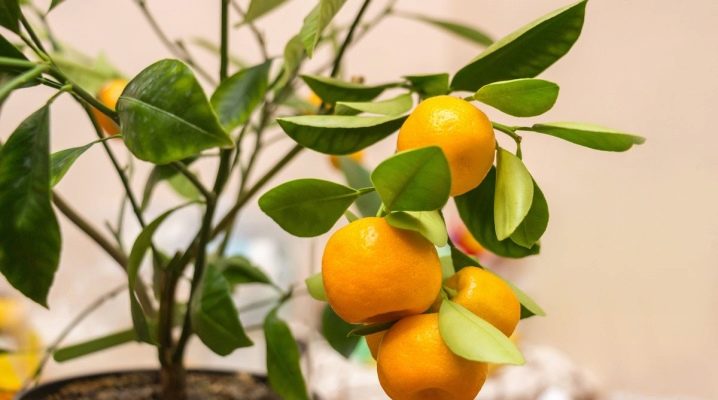
Pomegranate, lemon, pineapple - what kind of plants are not grown by lovers of exotic flora at home. In this article, we will introduce you to an amazing representative of citrus fruits called calamondin citrofortunella, we will tell you about its types and cultivation features.
Description
Calamondin is a representative of the Rutov family, the fruit of the selection of kumquat and mandarin, appeared in Europe from the sultry Southeast Asia. At home, calamondin grows like an ordinary tree, but for us it is a citrus baby, no higher than 1-2 m, a resident of apartments and home greenhouses.
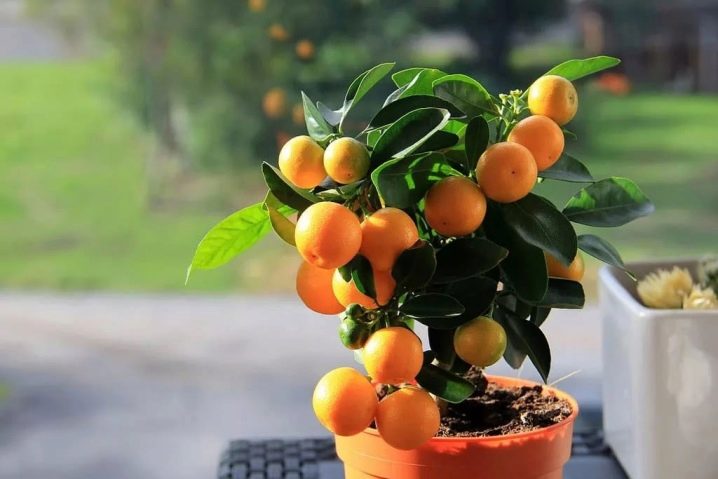
Flower lovers have appreciated the culture for its striking appearance. The crown of the tree is dense and neat. The foliage is bright green, firm, oval in shape. The shoots of the tree are well branched, without sharp thorns. Flowers - in the form of five-pointed stars, with a pleasant delicate aroma, appear in abundance in early summer.
The plant can bear fruit and bloom at the same time until late autumn. The tree is characterized by self-pollination and a large number of ovaries. Small, bright orange fruits weighing no more than 10-15 g, which can be eaten, appear for the first time on a young tree 2-3 years after planting. Their taste is sweet and sour, sometimes with a hint of bitterness.
Calamondin owners advise to use the fruit along with the skin, then its taste becomes very pleasant and non-bitter.
Some growers grow citrofortunella for decorative purposes, such as a standard crop or bonsai. Others value the plant for its long flowering time, delicate aroma, and delicious fruits that come with good care. And proper care begins with proper landing.

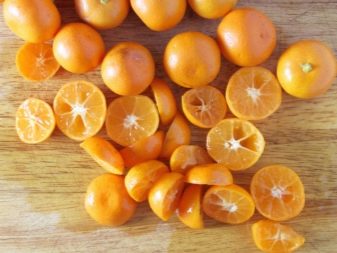
Landing
After the tree has moved from the store to the house, it is a big mistake to transplant citrofortunella into a new pot right after the purchase and put it on the windowsill along with other flowers. The plant must spend at least 5 days in quarantine, on a light windowsill in splendid isolation. During this time, it turns out whether your new tenant is healthy, whether he likes the new habitat or should he move to another place.
Two weeks later, if the bush looks great, citrofortunella can be transplanted into a nutrient mixture of sod soil, sand and rotted manure, having previously poured a layer of drainage from expanded clay and broken brick into the pots.
The fruits, no matter how sorry, must be removed from the plant. To get used to the new conditions and survive the transplant safely, calamondin needs strength. Waste of energy for ripening fruits will be superfluous.
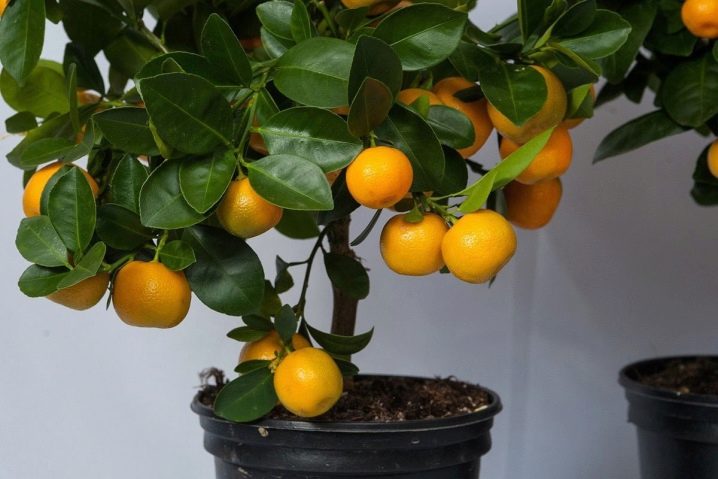
Transplant stages
- Pour the prepared soil into a pot to cover the expanded clay layer.
- Remove the calamondin from the shipping container.
- Examine carefully the earthen lump of the plant.
- If there are traces of rot, mold or insects on the soil and roots, it is better to carefully remove the soil between the roots with your fingers or with a wooden skewer, and rinse the roots in a weak solution of potassium permanganate.
- If the earthen ball is intact, simply place the shrub in a new pot.
- Hold the plant and pour soil into the planter around the edges, trying to do this evenly.
- After you have covered the plant with earth to the line of the root collar, water the soil.
- The soil will settle and you still need to add earth to the pots.
- Water the plant again and place it in a bright, warm place prepared for it.
- Calamondin is not required to fertilize after transplantation: the new soil is rich in all the necessary substances.
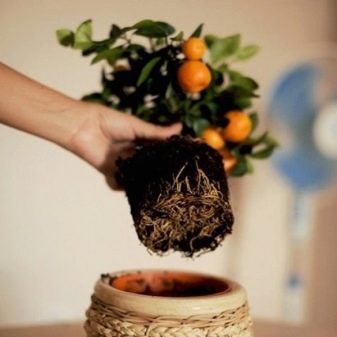
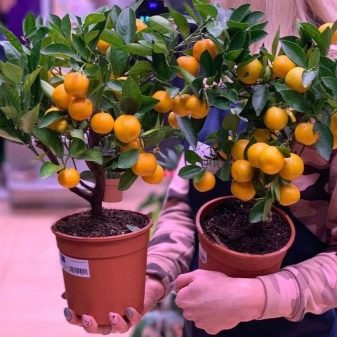
Views
A favorite of indoor florists - the fruit of calamondin or citrofortunella microcarp is found in several varieties.
- "Senteniel variegated" (or "spotted", which means in translation from English). Its distinctive feature is an unusual, variegated color of fruits and leaves. The small fruits of the variegated Centeniel variety look more like watermelons than lemons.
- "Meiva". A tree with very sweet oval fruits, bright orange, pitted.
- Peters. The variety pleases with amazingly beautiful flowering, but its fruits are completely tasteless.
- "Doll". Plant with a dense, well-developed crown. The fruit is pear-shaped with a sweet edible rind and sweet and sour pulp.
- "Tiger". The variety has a beautiful decorative golden border around the edge of the foliage. The taste of the fruit is ordinary, sweet and sour.
- "Margarita Nagami". A frost-resistant variety with small fruits reminiscent of miniature oranges. Calamondin blooms all summer, and begins to bear fruit in winter.
- "Obovata Fukushi". A tree with a regular spherical crown, ideal for growing as a standard crop. Gives a rich harvest of large fruits with a fragrant aroma.
- Margarita Big. Frost-resistant, miniature variety with sweet and sour pear-shaped fruits.
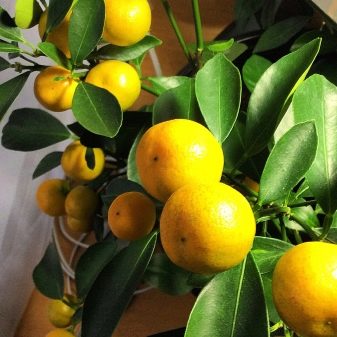

Care
If you decide to get a Calamondin, consider that you have a new pet. The plant is not picky about conditions, but demanding to care for, but it pays for taking care of itself with generous gratitude.
Taking care of a tree is easy. It will tell you by itself if something goes wrong. People who grow citrofortunella at home note that if you learn to understand the "language" of a plant and take care of it like a living being, it will surely become your favorite and the best decoration for your home.
The delicate aroma of its flowers will cheer you up, and the sunny fruits will delight the eye and taste: tea with a slice of calamondine is fragrant and aromatic, with a pleasant tart sourness.
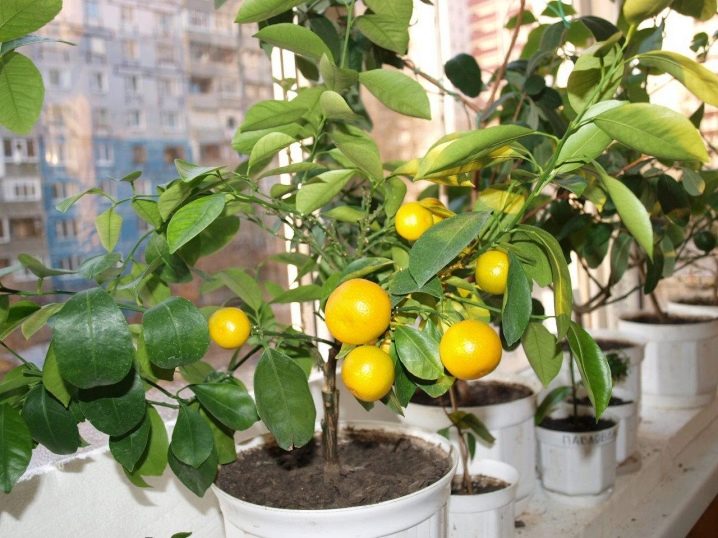
Conditions
Like all plants from hot continents, the culture does not tolerate strong drafts and cold air. It is better to place the plant in a well-lit place, but away from the burning sunlight. They are also detrimental to gentle calamondine. The room temperature should be moderate - from 18 to 22 degrees.
Calamondin feels best on western windows. A dark north or hot south window will not be to his liking. In the warm season, it is good to take the plant out to a glazed veranda or balcony.
Observe the tree to determine if the conditions are right for citrofortunella. A healthy plant will immediately let you know that something went wrong. For example, the branches of citrofortunella begin to droop, and the leaves become dull and yellow, and the plant sheds them completely. If you notice the slightest change, move the pot to another place. If calamondin is comfortable, it will instantly rise and delight you.

Watering
Citrofortunella is a moisture-loving culture. Abundant and regular watering is necessary for the plant in the warm season, especially during flowering and fruiting. In the cold months, Calamondin is watered no more than 2-3 times a month. Moisten the soil in the pot as soon as the topsoil dries out by 1-2 cm.
Despite the love for water procedures, the stagnation of excess moisture at the bottom of the pot is dangerous for the tree. It is necessary that there is a good outflow of water from the planter. Its remains must be poured out of the pallet in a timely manner so that the roots of the plant do not rot.
Calamondin really does not like dryness, it is often undesirable to spray it, and during flowering it is impossible. It is necessary to humidify the atmosphere around the tree from a spray bottle, especially if the culture is located near heating appliances.

Top dressing
They feed the culture all year round. The plant blooms for a long period, and then bears fruit, it just needs additional nutrition. During the growing season, calamondin is fertilized twice a week.In winter, citrofortunella rests, but does not completely retire. Fertilize it once a month with a suitable mineral mixture for citrus plants, containing all the necessary trace elements and vitamins. Dilute fertilizers in water according to the instructions.
Citrofortunella is fertilized with drugs:
- Bona Forte;
- "Flower heaven";
- "The Power of Life";
- Joy;
- Pokon.
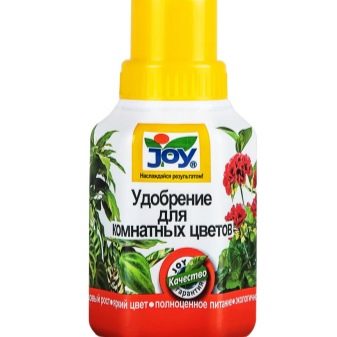
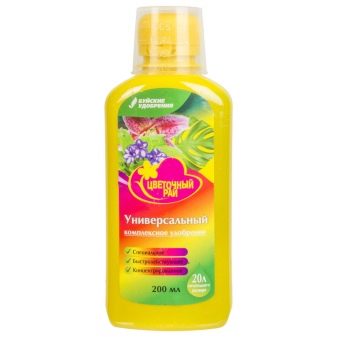
Pruning
It is better to prune the crop in the spring, before the start of the active growing season. First of all, they do sanitary pruning of citrofortunella:
- remove diseased and broken branches;
- eliminate shoots growing in the wrong direction - "tops".
After that, they begin to form a beautiful spherical crown. With the help of pruning, you can make a small neat bush or a compact tree with a dense crown from Calamondin. Pruning helps not only to give the plant a decorative look, but also contributes to the appearance of more young shoots that will actively bloom and bear fruit.
In the summer, the plant is no longer cardinal pruning, but pinching is done on the upper part of the shoots in order to preserve the beautiful shape of the bush.
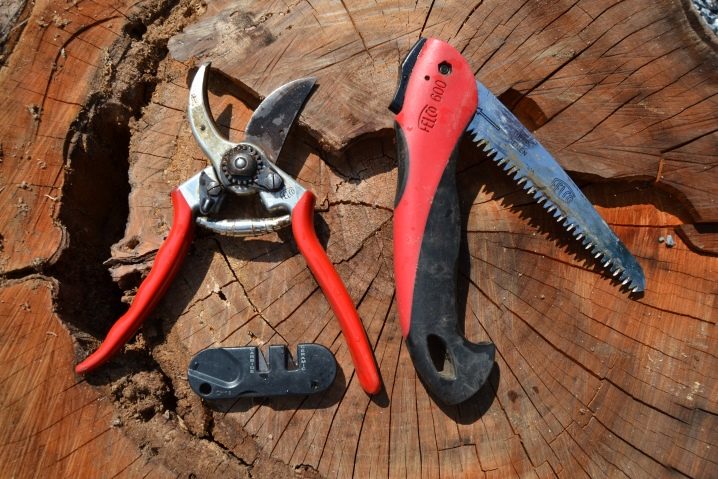
Dormant period
From the end of November to the end of winter, it is better to move calamondin to a cool room. The temperature in the room should be no higher than 15 degrees, and the humidity should be kept high enough. The tree is placed in a well-lit place, isolated from the battery.
In cold weather, calamondin can shed its leaves, but this does not mean that the tree is dead. The plant is bare for a short time, and then it grows green again. The main thing is not to forget to water the bush and fertilize 2 times during the winter, as well as humidify the air around the calamondin.
Daylight hours near the tree lasts at least 10 hours, so be sure to take care of a phytolamp for the plant.

Transfer
A new pot for calamondin should be 3-4 cm larger than the previous one. Select a suitable container made of wood or ceramic. You can also plant calamondin in a plastic pot, but make the drainage layer 1-2 cm thicker in it.
Algorithm of actions:
- remove the tree from the old planter;
- carefully examine the root system;
- using sterilized scissors, remove rotten and damaged roots;
- sprinkle the cut sites with activated carbon powder;
- for planting, use a special soil for citrus plants;
- after the procedure, water the tree only with ordinary settled water without any fertilizers, otherwise you risk burning the plant roots.
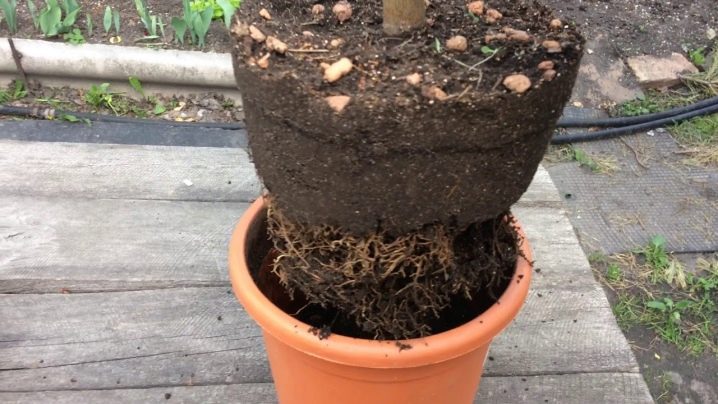
Reproduction
The culture is propagated by seeds, by grafting and cuttings. The last two methods are considered the most successful by experienced gardeners. Seed propagation is a less attractive method.
Calamondin grown using seeds does not always inherit the best qualities of the mother tree, and fruiting of such a specimen begins no earlier than 3-5 years later.
From the bone
- To grow calamondin from a seed, plant seeds are placed in containers with moist, loose soil and covered with glass or a bag.
- They are placed in a warm place and regularly ventilated.
- When the sprouts appear, the greenhouse is opened.
- The grown seedlings dive after the appearance of 3 true leaves.

Cuttings
- Cuttings are carried out in the summer, when young shoots appear on the tree.
- The shoots of the upper part of the shoot with 2-3 developed buds are cut 10-12 centimeters long and placed in a solution of Kornevin, Zircon or Heteroauxin overnight. Growth stimulants accelerate the formation of a strong and healthy plant root system.
- In the morning, the cuttings are planted in cups with a substrate and covered with a bottle or film, not forgetting to remove for airing.
You can understand that the cuttings are rooted by the appearance of new young leaves.
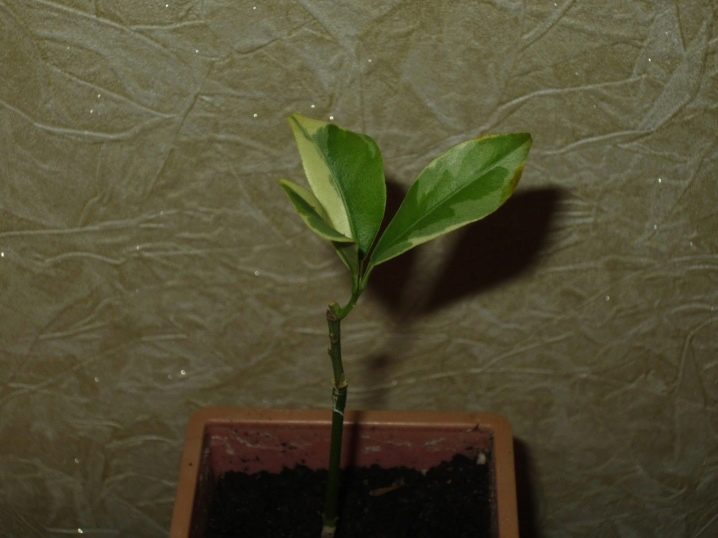
Vaccination
Grafting is done during the active growing season of the plant.A healthy strong stalk from an adult varietal tree is used as a scion, and the stock is a young citrofortunella bush in the second year of life, grown from seeds.
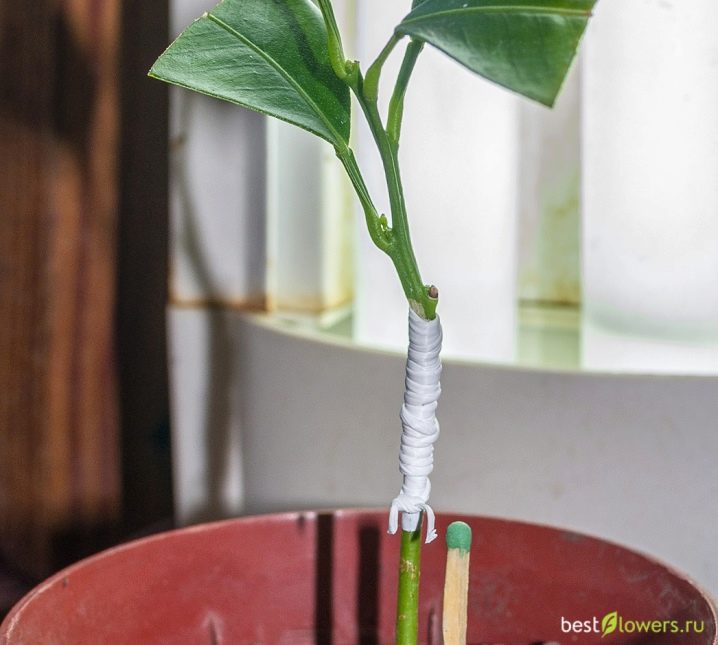
Diseases and pests
Gommoz
On the trunk and branches of a tree, from cracks and wounds, sticky amber secretions appear, viscous and dense in consistency, thickening in air. The tree weakens and withers before our eyes.
The causes of citrofortunella disease are nitrogen-oversaturated soil, potassium deficiency, overcooling of the substrate, or the root collar of the plant that is too deep when planting.
The wound on the tree is treated with a solution of potassium permanganate and covered with garden pitch.
For recovery, the plant needs proper watering, treatment with a solution of fungicides, good drainage.
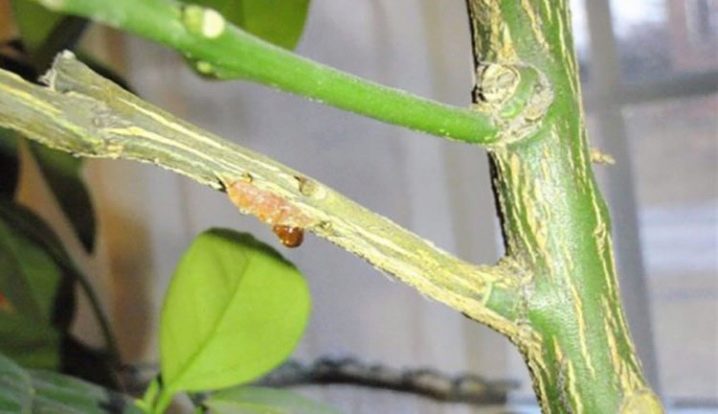
Anthracosis
A sign of anthracosis fungus is the appearance of yellow-brown spots on the leaves of calamondin. The leaves are actively crumbling, drying up. Brown mold and pits appear on the branches.
The plant is treated with Fitosporin-M and treated with fungicides. Be sure to remove all diseased leaves and branches, burn them to prevent the spread of the fungus. Disinfect the place where the calamondin pot was.
The cause of the onset of the disease is high humidity and temperature in the room. At the time of plant treatment, you need to reduce watering and remove spraying, move the bush to a drier and cooler place.
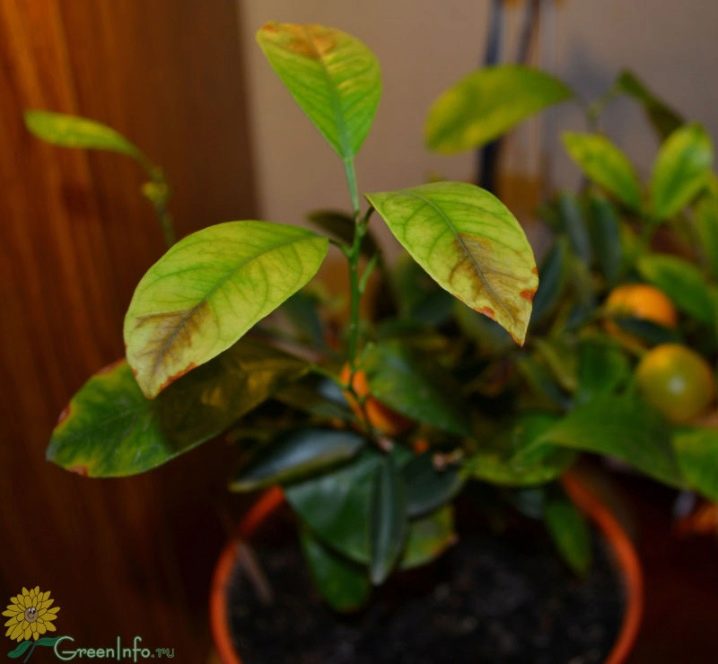
Sooty fungus
The leaves of the plant are covered with numerous dark gray dots, which appear in place of the remains of the vital activity of insect pests: aphids, scale insects, mealy worms. In the leaves covered with plaque, all vital processes are disrupted, and the plant dies.
To save the tree, it is necessary to wash off the black plaque from the leaves, etch the pests with Actellik, and then get rid of the fungus with the help of fungicides.

Powdery mildew
A white bloom appears on the leaves of the plant, they turn yellow, curl and fall off. The root system of the plant primarily suffers from the spores of powdery mildew.
The reason is that the fungus appears in the soil due to too much watering and humidity in the room. Get rid of the disease with the help of biological products "Fitosporin-M", "Gamair" or use fungicides.
The main pests of calamondin are insects that cause irreparable harm to the plant with their vital activity:
- aphid;
- false shield;
- whitefly;
- spider mite;
- shield.

You need to fight the enemies of citrofortunella in all possible ways. Manually - collect and destroy parasites, wipe each leaf with a cotton swab with a solution of green soap. Using chemicals - treat the plant with effective drugs:
- Fitoverm;
- Aktara;
- Actellik;
- Iskra-M;
- Akarin.
To avoid the appearance of insects on your green pet, it is necessary to regularly inspect the plant for the appearance of diseases and pests. It is good to periodically arrange the treatment of the bush with a solution of green soap or a decoction of garlic.
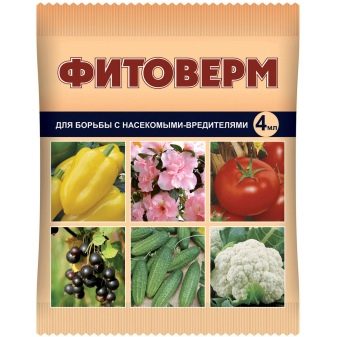
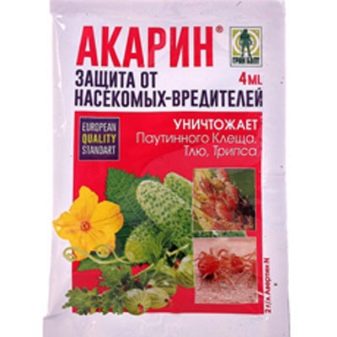
The soil into which the plant is transplanted must be calcined in the oven or sterilized in the microwave to get rid of pest larvae and fungal spores.































The comment was sent successfully.